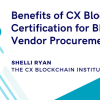Best Practices for Contract Development and Negotiations
With so many elements and technologies present in every vehicle on the road, the ecosystem behind the vehicles we drive is massive. Navigating the business side of the automotive and technology worlds requires partnerships, and deals are happening constantly behind the scenes as suppliers and OEMs align with the goal of creating the next big thing in the world of autonomous vehicles and vehicle technology.
Here are some key best practices that can lead to successful, efficient negotiations to create partnerships, which are an essential element of long-lasting success for businesses across the entire automotive ecosystem, as well as other fields.
Know Your Goals Going In
With any contract, each side should enter negotiations with detailed thoughts and outlooks on what needs to be accomplished. Issues such as timeframe for work being completed, what exactly needs to be accomplished — and of course any dollar figures involved— will need to be resolved with any potential partner before moving forward with a partnership. To have the proper goals in mind, do research prior to negotiations to know where you have synergies and what each side can contribute to the partnership.
Be Prepared to Compromise
While you should enter a negotiation with your ultimate goals in mind, know that compromise may be needed, and determine your limits on how flexible you will be before beginning negotiations. It’s also possible that some new information may surface during negotiations that will impact the level to which you are willing to adjust.
Customization
Being flexible and offering customizability is also important. To achieve a successful business relationship, there should be a focus on functionality and performance that meets customer requirements as detailed in their RFQ. Software customization and optimization should be offered to meet various customer requirements, and close attention must be paid to deliver performance that exceeds customer expectations.
Show Your Successes and Provide Data
When negotiating with major companies such as OEMs or Tier 1 suppliers, showing what is unique about your business and how you stand out from the competition is critical. Focus on what makes you stand out in your field of expertise. Tout key successes to earn trust with potential partners, such as number of published patents, and quick patent issuance time frames. Be specific and show data detailing results you have achieved in the past, and how those experiences can help lead to success in the new partnership.
Listen
Listening to your potential partner is equally as important as presenting them with information about your company. What you hear may change the course of the negotiations in a way you had not anticipated.
Mitigate Risks
Each side should create a checklist of key issues that need to be addressed during the negotiations, so no key topics are forgotten. And if the contract changes throughout the negotiations, keep track of all versions in case anything needs to revert.
Do not leave any important aspects out of the contract, even if you think they are implied. This can only lead to complications. Cover your bases legally and ensure confidentiality. This attention to detail is essential so both parties are on the same page and there are no misunderstandings down the road.
Contract Templates and Established Language
One factor that can delay drafting and approval of contracts and partnerships is getting caught up in technical language and details, and any legal language that must be included to ensure privacy and confidentiality. To avoid these delays, this language can often be standardized, so it doesn’t need to be rewritten for every contract. Any time saved by not thinking about this technical and legal language means more time to focus on establishing trust and a relationship with a potential partner.
Establish Workflow Process
Delays in contract review and approval can also come from not having an established workflow for contracts. For whomever needs to see the contract at each partner company — from legal to top management — there should be an established procedure for the order in which these approvals are completed, as well as how changes are made once feedback is received.
Without a set process, there is a risk that bureaucracy could delay a contract from being completed. For some deals where there is less risk involved, the contract workflow can be simplified or even semi-automated to smooth out the process.
Renew or Expand Existing Contracts
Beyond bringing in new partners, it’s important to recognize the importance of contract lifecycle management. It is critical that a business recognizes the status of existing contracts, maintains strong relationships with existing partners and looks into how the partnership can be expanded based on future opportunities.







